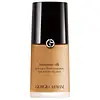What's inside
What's inside
 Key Ingredients
Key Ingredients

 Benefits
Benefits

 Concerns
Concerns

 Ingredients Side-by-side
Ingredients Side-by-side

Water
Skin ConditioningMethyl Trimethicone
Skin ConditioningNylon-12
Butylene Glycol
HumectantAlcohol Denat.
AntimicrobialPEG-10 Dimethicone
Skin ConditioningDimethicone
EmollientSilica
AbrasiveTrimethylsiloxysilicate
EmollientHamamelis Virginiana Water
AstringentTrehalose
HumectantCalcium Stearate
Cosmetic ColorantSalicylic Acid
MaskingZinc PCA
HumectantAlgae Extract
EmollientLactobacillus Ferment
Skin ConditioningLaminaria Saccharina Extract
Skin ProtectingGlycyrrhetinic Acid
Skin ConditioningGlycerin
HumectantCaffeine
Skin ConditioningDimethicone/Vinyl Dimethicone Crosspolymer
Skin ConditioningMethicone
EmollientLauryl PEG-9 Polydimethylsiloxyethyl Dimethicone
Skin ConditioningIsohexadecane
Emollient10-Hydroxydecanoic Acid
Skin ConditioningDimethicone/PEG-10/15 Crosspolymer
Sodium Chloride
MaskingDipropylene Glycol
HumectantTromethamine
BufferingLecithin
EmollientSorbitan Sesquioleate
EmulsifyingPropylene Carbonate
SolventDisteardimonium Hectorite
StabilisingTocopherol
AntioxidantSodium Citrate
BufferingDisodium EDTA
Phenoxyethanol
PreservativeBenzoic Acid
MaskingPotassium Sorbate
PreservativeMica
Cosmetic ColorantCI 77891
Cosmetic ColorantCI 77491
Cosmetic ColorantCI 77492
Cosmetic ColorantCI 77499
Cosmetic ColorantWater, Methyl Trimethicone, Nylon-12, Butylene Glycol, Alcohol Denat., PEG-10 Dimethicone, Dimethicone, Silica, Trimethylsiloxysilicate, Hamamelis Virginiana Water, Trehalose, Calcium Stearate, Salicylic Acid, Zinc PCA, Algae Extract, Lactobacillus Ferment, Laminaria Saccharina Extract, Glycyrrhetinic Acid, Glycerin, Caffeine, Dimethicone/Vinyl Dimethicone Crosspolymer, Methicone, Lauryl PEG-9 Polydimethylsiloxyethyl Dimethicone, Isohexadecane, 10-Hydroxydecanoic Acid, Dimethicone/PEG-10/15 Crosspolymer, Sodium Chloride, Dipropylene Glycol, Tromethamine, Lecithin, Sorbitan Sesquioleate, Propylene Carbonate, Disteardimonium Hectorite, Tocopherol, Sodium Citrate, Disodium EDTA, Phenoxyethanol, Benzoic Acid, Potassium Sorbate, Mica, CI 77891, CI 77491, CI 77492, CI 77499
Water
Skin ConditioningCyclopentasiloxane
EmollientGlycerin
HumectantIsododecane
EmollientAlcohol Denat.
AntimicrobialPolyglyceryl-4 Isostearate
EmulsifyingCetyl PEG/PPG-10/1 Dimethicone
EmulsifyingHexyl Laurate
EmollientAluminum Starch Octenylsuccinate
AbsorbentDisteardimonium Hectorite
StabilisingPhenoxyethanol
PreservativeAcetylated Glycol Stearate
EmollientMagnesium Sulfate
PEG-10 Dimethicone
Skin ConditioningTrihydroxystearin
Skin ConditioningCellulose Gum
Emulsion StabilisingNylon-12
Limonene
PerfumingBenzyl Salicylate
PerfumingBenzyl Alcohol
PerfumingLinalool
PerfumingPentaerythrityl Tetra-Di-T-Butyl Hydroxyhydrocinnamate
AntioxidantIsobutane
Diphenyl Dimethicone
EmollientAcrylonitrile/Methyl Methacrylate/Vinylidene Chloride Copolymer
Parfum
MaskingDisodium Stearoyl Glutamate
CleansingMethylparaben
PreservativeButylphenyl Methylpropional
PerfumingAluminum Hydroxide
EmollientHexyl Cinnamal
PerfumingWater, Cyclopentasiloxane, Glycerin, Isododecane, Alcohol Denat., Polyglyceryl-4 Isostearate, Cetyl PEG/PPG-10/1 Dimethicone, Hexyl Laurate, Aluminum Starch Octenylsuccinate, Disteardimonium Hectorite, Phenoxyethanol, Acetylated Glycol Stearate, Magnesium Sulfate, PEG-10 Dimethicone, Trihydroxystearin, Cellulose Gum, Nylon-12, Limonene, Benzyl Salicylate, Benzyl Alcohol, Linalool, Pentaerythrityl Tetra-Di-T-Butyl Hydroxyhydrocinnamate, Isobutane, Diphenyl Dimethicone, Acrylonitrile/Methyl Methacrylate/Vinylidene Chloride Copolymer, Parfum, Disodium Stearoyl Glutamate, Methylparaben, Butylphenyl Methylpropional, Aluminum Hydroxide, Hexyl Cinnamal
 Reviews
Reviews

Ingredients Explained
These ingredients are found in both products.
Ingredients higher up in an ingredient list are typically present in a larger amount.
Alcohol Denat. is an alcohol with a denaturant property. It is created by mixing ethanol with other additives.
This ingredient gets a bad rep because it is irritating and drying - mostly due to its astringent property. Astringents draw out natural oils in tissue, constricting pores and leaving your skin dried out.
However, alcohol denat. is not all that bad.
Due to its low molecular weight, alcohol denat. tends to evaporate quickly. One study on pig skin found half of applied alcohol evaporated in 10 seconds and less than 3% stayed on skin.
This also helps other ingredients become better absorbed upon application.
Studies are conflicted about whether this ingredient causes skin dehydration. One study from 2005 found adding emollients to propanol-based sanitizer decreased skin dryness and irritation. Another study found irritation only occurs if your skin is already damaged.
Small amounts of alcohol are generally tolerated by oily skin or people who live in humid environments.
The rule of thumb is if this alcohol is near the end of an ingredients list, it will probably not affect your skin much.
Also...
This ingredient has antimicrobial and solvent properties.
The antimicrobial property helps preserve products and increase their shelf life. As a solvent, it helps dissolve other ingredients.
Other types of astringent alcohols include:
Learn more about Alcohol Denat.Disteardimonium Hectorite comes from the clay mineral named hectorite. It is used to add thickness to a product.
It can also help stabilize a product by helping to disperse other ingredients.
Hectorite is a rare, white clay mineral.
Learn more about Disteardimonium HectoriteGlycerin is already naturally found in your skin. It helps moisturize and protect your skin.
A study from 2016 found glycerin to be more effective as a humectant than AHAs and hyaluronic acid.
As a humectant, it helps the skin stay hydrated by pulling moisture to your skin. The low molecular weight of glycerin allows it to pull moisture into the deeper layers of your skin.
Hydrated skin improves your skin barrier; Your skin barrier helps protect against irritants and bacteria.
Glycerin has also been found to have antimicrobial and antiviral properties. Due to these properties, glycerin is often used in wound and burn treatments.
In cosmetics, glycerin is usually derived from plants such as soybean or palm. However, it can also be sourced from animals, such as tallow or animal fat.
This ingredient is organic, colorless, odorless, and non-toxic.
Glycerin is the name for this ingredient in American English. British English uses Glycerol/Glycerine.
Learn more about GlycerinNylon-12 is a polymer. It is derived from 12-aminododecanoic acid, an omega-amino fatty acid
According to a manufacturer, it is a talc substitute. Like talc, nylon-12 gives products a satin feel. The manufacturer also claims this ingredients does not block pores and has moderate oil absorption.
This ingredient may not be reef-safe.
Learn more about Nylon-12Peg-10 Dimethicone is silicone with conditioner and emulsifier properties. It mostly acts as an emollient in skincare and and humectant in haircare.
According to the manufacturer, acidic formulations decrease the stability of this ingredient. It works best in neutral or near neutral formulations.
Phenoxyethanol is a preservative that has germicide, antimicrobial, and aromatic properties. Studies show that phenoxyethanol can prevent microbial growth. By itself, it has a scent that is similar to that of a rose.
It's often used in formulations along with Caprylyl Glycol to preserve the shelf life of products.
Water. It's the most common cosmetic ingredient of all. You'll usually see it at the top of ingredient lists, meaning that it makes up the largest part of the product.
So why is it so popular? Water most often acts as a solvent - this means that it helps dissolve other ingredients into the formulation.
You'll also recognize water as that liquid we all need to stay alive. If you see this, drink a glass of water. Stay hydrated!
Learn more about Water